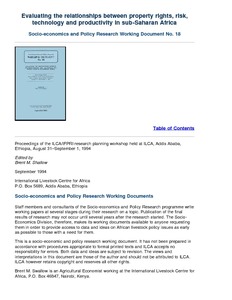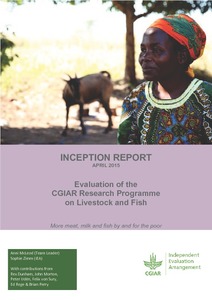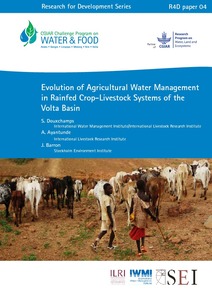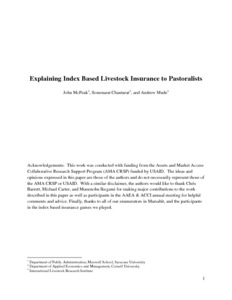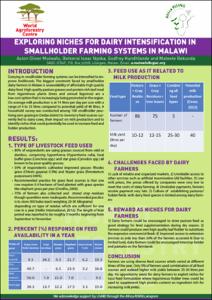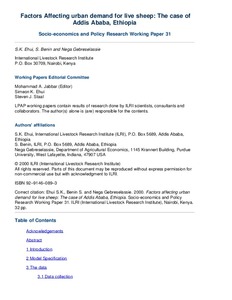Evaluating the relationships between property rights, risk technology and productivity in sub-Saharan Africa
This document reports the results of a small meeting of social scientists from ILCA and IFPRI held at ILCA. The workshop was conceived to summarize the results of studies previously conducted by ILCA and others, to identify priorities for future research; to provide guidance for future research - problems, methodology, locations, and resource requirements, and to consider specific proposals for future research and evaluate the areas of complementarity and/or overlap with other past or current projects.

